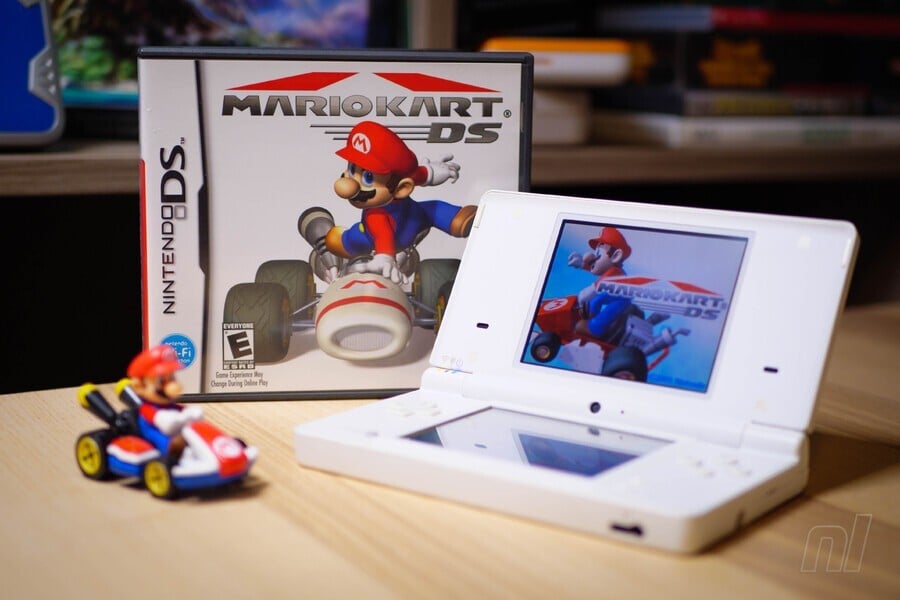One of the joys of Nintendo’s Switch is how it marries the company’s home console heritage with its equally prestigious handheld line. Ask anybody over the age of 30 to name a handheld system and “Game Boy” will likely still be the first answer; that system became synonymous with portable gaming in the same way as all home consoles were routinely referred to as “Nintendos” back in the day.
Younger generations, though, are more likely to name the unlikely upstart that stole Game Boy’s portable crown and permanently ousted that mighty brand name from the company’s lineup: the Nintendo DS.
It’s strange to think back to a time when the odd-looking, folding dual-screened console was positioned as a ‘third pillar’ alongside GameCube and Game Boy Advance.
The original prototype and even the initial ‘Phat’ version of the hardware certainly didn’t look like much of a threat. The early reveal model Reggie pulled from his pocket looked undeniably clunky, especially up against the sleek elegance of Sony’s PSP. There was a nervousness from fans that Sony’s arrival on the handheld market was the death knell to Nintendo’s dominance in the same way it had been with the home console market nearly a decade earlier. How was an ugly, dual-screen, Game and Watch-alike going to win a console war?! Nintendo seemed to be grabbing at straws, and inexplicably jumping off the good ship Game Boy, scuppering its flagship handheld for no good reason.
The gamble paid off, though, and the Nintendo DS became the first movement in a blue ocean strategy that Nintendo president Satoru Iwata would soon employ with the Wii.
With its approachable touchscreen input and huge breadth of software to appeal to audiences old and young, gamer and non-gamer alike, the DS helped bring handheld gaming to demographics who had felt excluded from the Game Boy phenomenon, for whatever reason. Software like Brain Training and Nintendogs sat alongside core RPGs and classic games on a system that could be as wacky or as strait-laced as a developer desired.
Gamers’ favourite franchises continued to arrive in fresh forms, too, while titles like Animal Crossing: Wild World found a huge new audience. Perhaps the biggest compliment we can pay the DS is that it made us forget almost entirely about the retirement of the ‘Game Boy’ line. The ‘Boy king was quietly removed and DS took its throne.

That’s not to say it was an instant transition, and you could argue that it wasn’t until the launch of the sleeker Nintendo DS Lite and the full suite of Touch Generations titles that DS really took off. Compared to the original, the Lite variant had the style and sleekness to hold its own against the PSP — which was starved of first-party games despite being an impressive bit of kit — and the breadth and quality of DS’ software library, both first- and third-party releases, left Sony in the dust.

